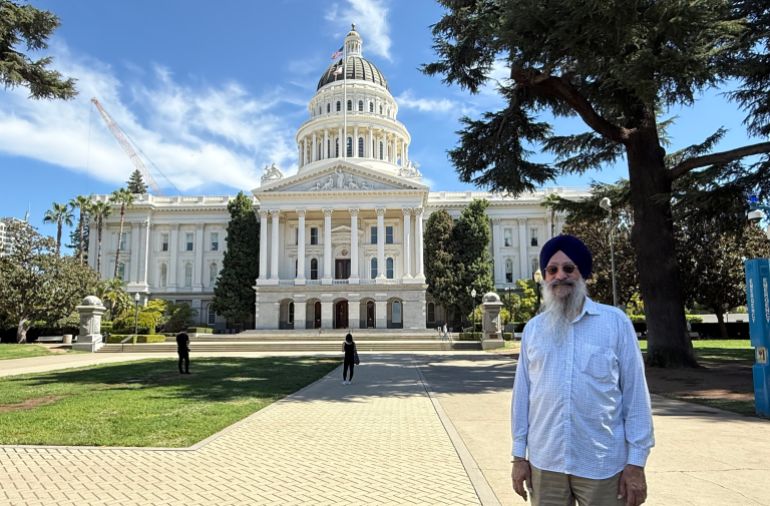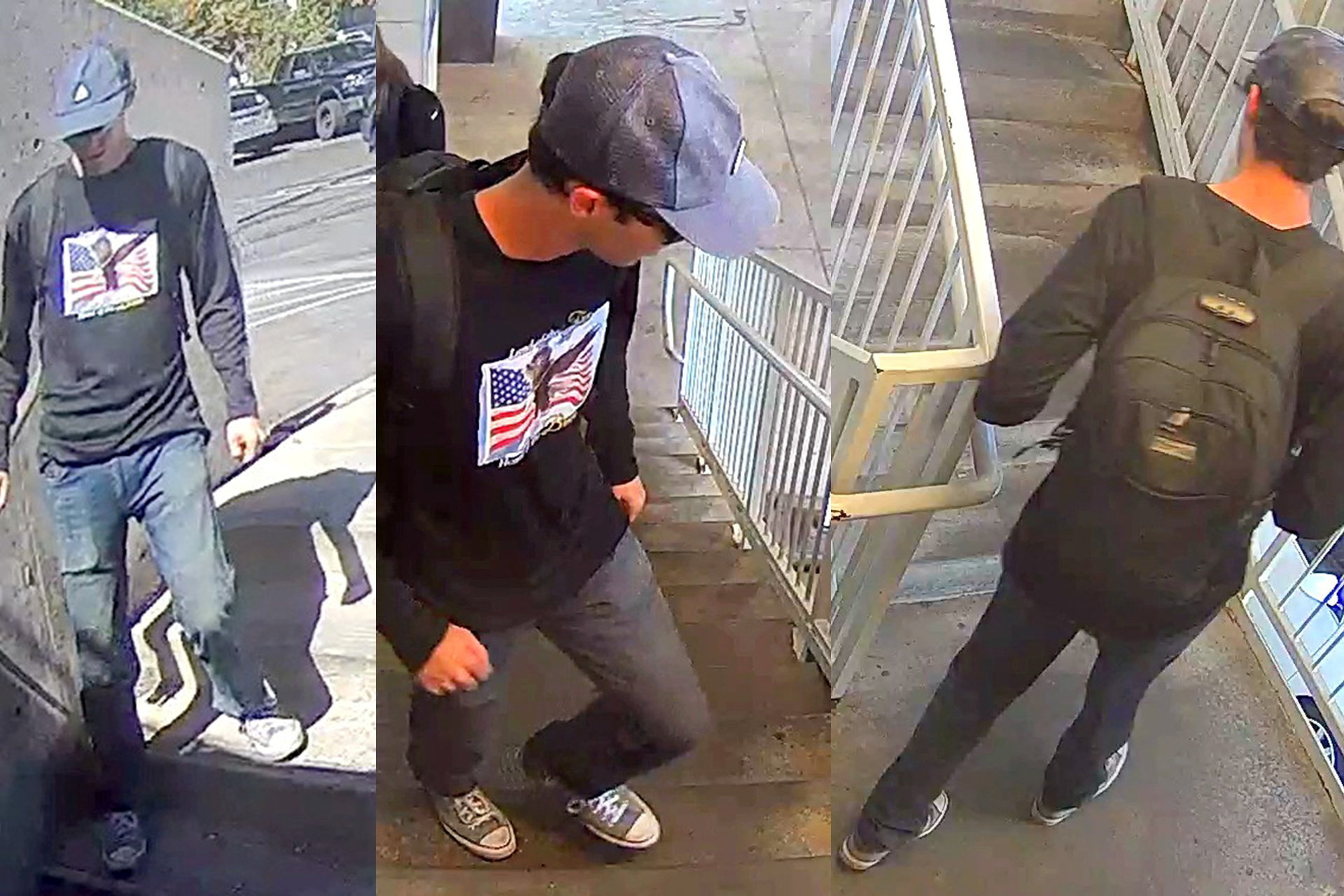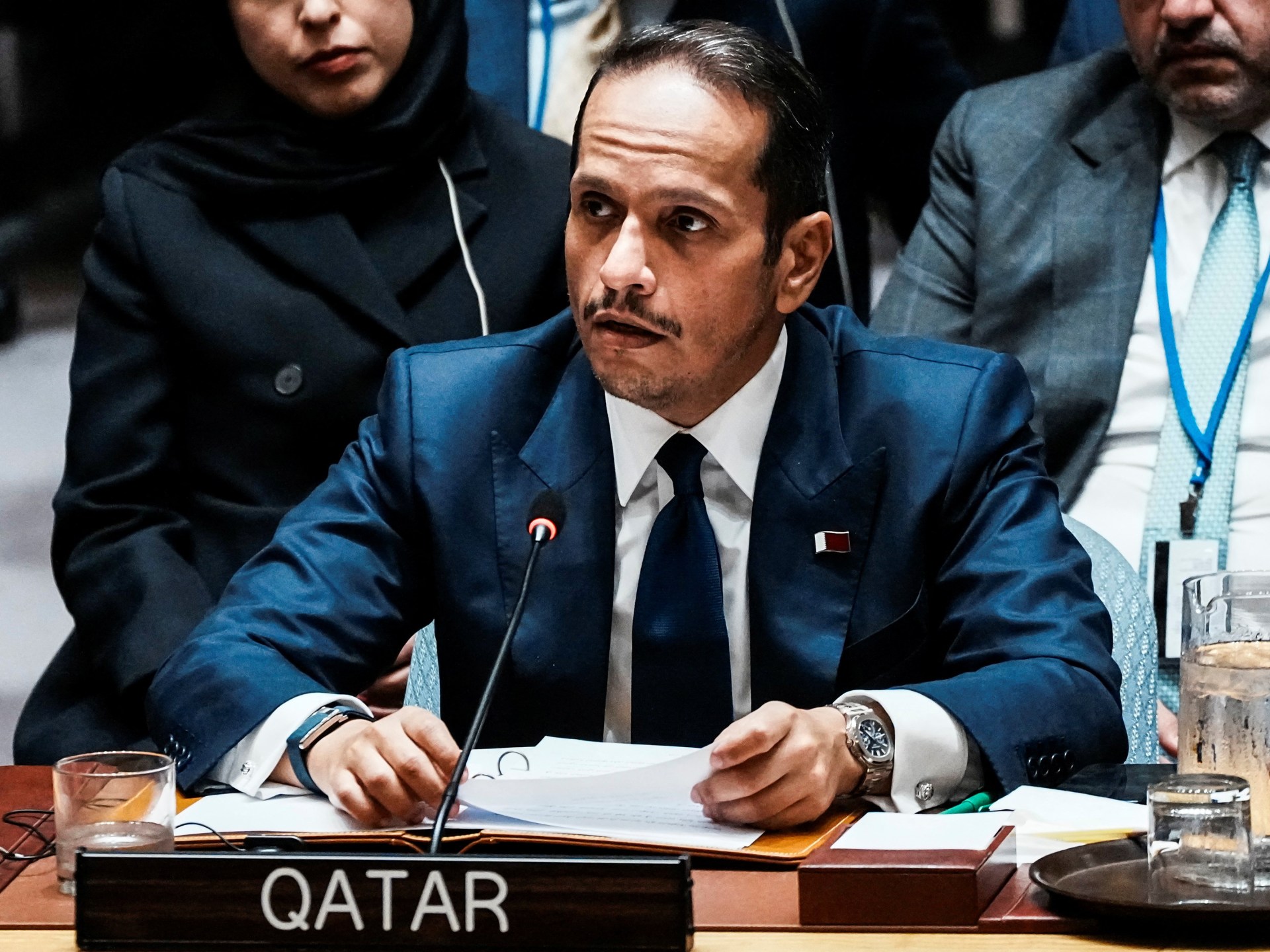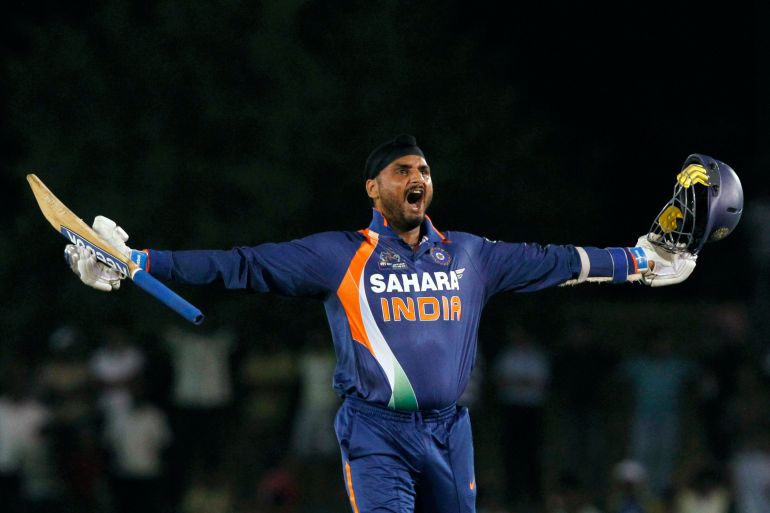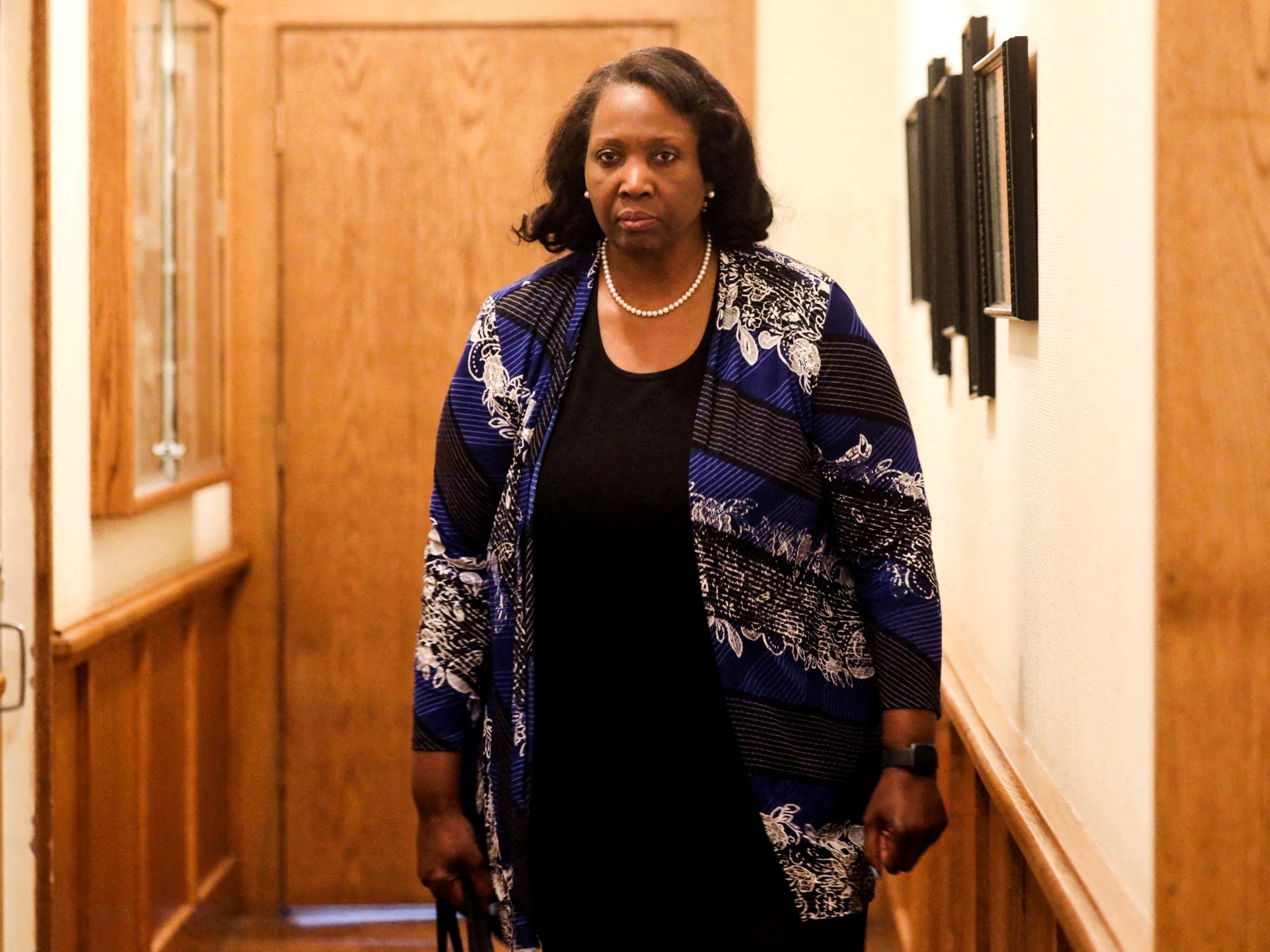Sacramento, California – On a sunny August morning, 60-year-old Gurtej Singh Cheema performed his morning prayers at his home in Sacramento. Then, the retired clinical professor of internal medicine made his way downtown to join more than 150 other Sikh Americans at California’s State Capitol.
He was there to speak in support of a state bill that, to many Sikhs, represents a matter of safety for the community.
California is home to an estimated 250,000 Sikhs, according to the community advocacy group, Sikh Coalition. They represent 40 percent of the nation’s Sikhs – who first made California their home more than a century ago.
But a spate of attacks and threats against community activists in North America over the past two years, which United States and Canadian officials have accused India of orchestrating, have left many Sikhs on edge, fearing for their safety and questioning whether law enforcement can protect them.
That’s what a new anti-intimidation bill seeks to address, according to its authors and advocates: If passed, it would require California to train officers in recognising and responding to what is known as “transnational repression” – attempts by foreign governments to target diaspora communities, in practice. The training would be developed by the state’s Office of Emergency Services.
“California can’t protect our most vulnerable communities if our officers don’t even recognize the threat,” Anna Caballero, a Democratic state senator and author of the bill, said in the statement shared with Al Jazeera. “The bill closes a critical gap in our public safety system and gives law enforcement the training they need to identify foreign interference when it happens in our neighborhoods.”
But the draft legislation, co-authored by California’s first Sikh Assemblywoman Jasmeet Bains, and Assemblywoman Esmeralda Soria, has also opened up deep divisions within an Indian American community already polarised along political lines.
Several influential American Sikh advocacy groups – the Sikh American Legal Defense and Education Fund, Sikh Coalition and Jakara Movement among them – have backed the bill. Groups representing Indians of other major faiths, such as Hindus for Human Rights and the Indian American Muslim Council, have also supported the draft legislation, as has the California Police Chiefs Association.
But in the opposite corner stand Hindu-American groups like the Hindu American Foundation and the Coalition of Hindus of North America, as well as a Jewish group, Bay Area Jewish Coalition and even a Sikh group, The Khalsa Today. The Santa Clara Attorney’s office and Riverside County Sheriff’s Office have also opposed the bill.
Critics of the bill argue that it risks targeting sections of the diaspora – such as Hindu Americans opposed to the Khalistan movement, a campaign for the creation of a separate Sikh nation carved out of India – and could end up deepening biases against India and Hindu Americans.
The Riverside County Sheriff’s Office said that it had “concerns regarding the bill’s potential implications, particularly its impact on law enforcement practices and the inadvertent targeting of diaspora communities in Riverside County”.
But as Cheema stood with other Sikh Americans gathered at the state legislature on August 20 to testify before the Assembly Appropriations Committee, the urgency felt by many in the room was clear: Some had driven all night from Los Angeles, 620km (385 miles) away from Sacramento. Others took time off from work to be there.
“Any efforts that help a community feel safe, and you are a part of that community – naturally, you would support it,” Cheema, who also represented the Capital Sikh Center in Sacramento at the hearing, told Al Jazeera.
‘Harassment by foreign actors’
The Federal Bureau of Investigation (FBI) defines transnational repression as the acts of foreign governments when they reach beyond their borders to intimidate, silence, coerce, harass or harm members of their diaspora and exile communities in the United States.
The bill marks the second major legislation in recent years that has split South Asian diaspora groups in California. A 2023 bill that specified caste as a protected category under California’s anti-discrimination laws was vetoed by Governor Gavin Newsom after several Hindu-American groups lobbied against it. They argued that the state’s existing anti-discrimination laws already protected people from caste-based bias, and that specifying the new category was an indirect attack on Hinduism.
The California Assembly has now passed the new anti-intimidation bill. It will now return to the California Senate – which had passed an earlier version of the legislation – for another vote, expected this week. If it passes in the upper house of the California legislature, the bill will head to Newsom’s desk for his signature.
Thomas Blom Hansen, professor of anthropology at Stanford University, said the bill addresses concerns around online trolling, surveillance and harassment of individuals based on their political beliefs or affiliations – often influenced by foreign governments or political movements.
“The bill doesn’t name any specific country – it’s a general framework to provide additional protection to immigrants and diaspora communities from harassment by foreign actors,” Hansen told Al Jazeera.
But the backdrop of the bill does suggest that concerns over India and its alleged targeting of Sikh dissidents have been a major driver. Hansen noted that Senator Caballero comes from the 14th State Senate district, which has a significant Sikh population.
In 2023, Canada officially accused India of masterminding the assassination in June that year of Sikh separatist Hardeep Singh Nijjar in British Columbia. India has rejected the accusation, but relations between the two nations plummeted as a result – and remain tense, as Canada continues to pursue the allegations against individuals it arrested and that it says worked for New Delhi.
In November that year, US prosecutors also accused Indian intelligence agencies of plotting the assassination of Gurpatwant Singh Pannun, a New York-based Sikh activist. That plot was exposed after an alleged Indian agent accidentally ended up hiring an FBI informant for the hit job. Pannun leads Sikhs of Justice, a Sikh separatist advocacy group that India declared unlawful in 2019.
Several other Sikh activists in Canada and the US have received warnings from law enforcement agencies that they could be targeted.
Even Bains, the co-author of the new bill, has faced intimidation. In August 2023, after California recognised the 1984 massacre of thousands of Sikhs in India – following the assassination of then Prime Minister Indira Gandhi by her Sikh bodyguards – as a genocide, four men, apparently of Indian origin, visited her office. They allegedly threatened her, saying they would “do whatever it takes to go after you”.
Harman Singh, executive director of the Sikh Coalition, said the bill was timely.
“If a gurdwara committee leader calls the police to report a man who claims to be from the government of India coming to the gurdwara asking about other committee members’ immigration status, the trained officers will react to that very differently than those who aren’t,” Singh told Al Jazeera.
Vivek Kembaiyan of Hindus for Human Rights echoed Singh. The majority of crime is investigated at the local level, he said, and local law enforcement needs training to investigate transnational crimes.

Could ‘institutionalise biases’
But not everyone agrees.
Some groups argue that the bill is primarily meant to target India and Indian Americans, and especially suppress opposition to the Khalistan movement.
Samir Kalra, the 46-year-old managing director at the Hindu American Foundation, has emerged as one of the bill’s most vocal opponents.
“I believe that they have not gone far enough in providing adequate guardrails and safeguards to ensure that law enforcement does not institutionalise biases against groups from specific countries of origin and or with certain viewpoints on geopolitical issues,” Kalra, a native of the Bay Area, told Al Jazeera.
Kalra pointed to the supporters of the bill.
“The vast majority of supporters of this bill who have shown up to multiple hearings are of Indian origin and have focused on India in their comments and press statements around this bill. India is listed as a top transnational repression government,” he said. “It’s very clear that the true target of this bill is India and Indian Americans.”
Many Hindu temples, he said, had been desecrated in recent months with pro-Khalistan slogans.
“How can the Hindu American community feel safe and secure reporting these incidents without fear of being accused of being a foreign agent or having law enforcement downplaying the vandalisms?” he asked.
But Harman Singh rejected the suggestion that the bill was dividing the Indian American community along religious lines. “The coalition of groups supporting includes both Sikh and Hindu organisations as well as Muslim, Kashmiri, Iranian, South Asian, immigrants’ rights, human rights, and law enforcement organisations,” Singh said.
Some critics have expressed fears that activists training officers in recognising transnational attacks could institutionalise biases against specific communities.
But the Sikh Coalition’s Singh said those worries were unfounded. The training, he said, “will be created by professionals within those organisations, rather than ‘a small group of activists,’ so this criticism is not based in reality.”

‘My voice is being heard’
Rohit Chopra, a professor of communication at Santa Clara University in California, said critics of other governments “are all too routinely harassed, threatened, or even assaulted by foreign governments or their proxies within the US”.
“Even if the bill has some deterrent effect, which I believe it will, it will be well worth it,” Chopra told Al Jazeera. He emphasised that the bill does not restrict its ambit to any one country or a particular group of nations.
To Stanford University’s Hansen, that in effect raises questions about why some groups are opposed to the bill.
“When an organisation comes out strongly against such a bill, it almost feels like a preemptive admission – as if they see themselves as being implicated by what the bill seeks to prevent,” Hansen said.
Back in Sacramento, Cheema remains hopeful that the bill will pass. For him, the bill represents something far more significant than policy – recognition and protection on US soil.
“I could be the next victim if the law enforcement in my community is not able to recognise foreign interference,” Cheema said. “It doesn’t matter who is indulging in it or which country, I would naturally like my police officers to be aware of the threats.”
“If any group feels threatened, then all sections of society should make efforts to protect their people. This reassures me that my voice is being heard”, Cheema said.
